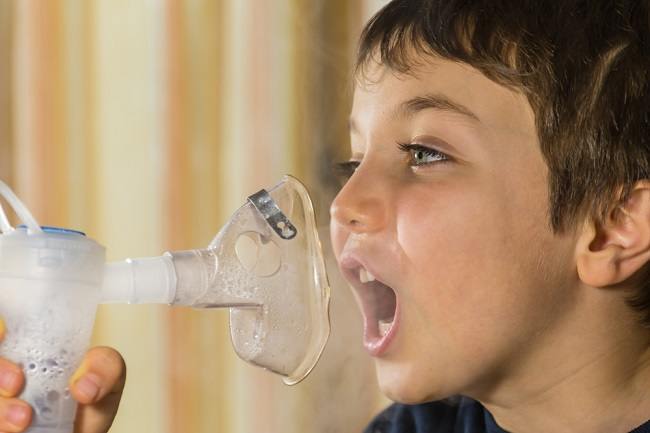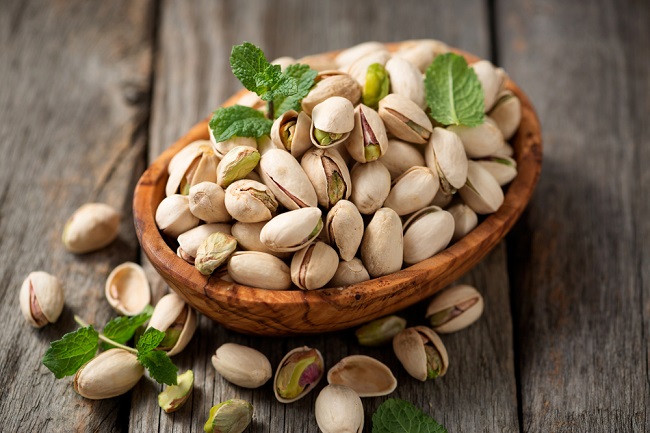Vincristine is a drug used to treat several types of cancer. This drug is usually given as part of a chemotherapy procedure to treat blood cancers (leukemia), lung cancer, neuroblastoma, brain tumors, Wilms tumor, Kaposi's sarcoma, and lymphoma.
Vinctistine works by inhibiting cell division, so the growth of cancer cells in the body can be slowed or stopped. Vincristine is usually combined with other chemotherapy drugs.

Vincristine is only given by a doctor or medical officer under the supervision of a doctor. This drug can be given by injection directly into a vein or through an IV.
vincristine trademark: Rasteo, Vincristine, and Vistin.
What's that Vincent?
| group | Chemotherapy drugs |
| Category | Prescription drugs |
| Benefit | Treating some types of cancer |
| Used by | Adults and children |
| Vincristine for pregnant and lactating women | Category D: There is positive evidence of risks to the human fetus, but the benefits may outweigh the risks, for example in dealing with life-threatening situations. It is not known whether the drug can be absorbed into breast milk or not. However, all chemotherapy drugs are thought to change the chemical structure of breast milk, so breastfeeding mothers are not allowed to receive chemotherapy drugs. |
| Drug form | Injection liquid |
Warnings Before Taking Vincristine:
- Tell your doctor if you are allergic to vincristine or any other chemotherapy.
- Do not use live attenuated vaccines, such as the BCG vaccine or be in close proximity to people who have recently been vaccinated, while taking vincristine.
- Tell your doctor if you are pregnant, breastfeeding, or planning a pregnancy.
- Do not drink alcohol, drive a vehicle, or operate machinery that requires caution while taking vincristine.
- Tell your doctor if you have an infectious disease, nerve or muscle disorder, such as ALS multiple sclerosis, and Charcot-Marie-Tooth disease, liver disease, lung disorders, blood disorders, or have had radiotherapy to the liver.
- Avoid impact and stay away from all activities that risk causing injury, because taking this drug can increase the risk of bleeding.
- Tell your doctor if you are taking any other medications, including supplements, vitamins, or herbal remedies.
- If you have an allergic reaction or overdose after using vincristine, contact your doctor immediately.
Vincristine Dosage and Rules
The dose of vincristine will be adjusted according to the patient's condition, response to treatment, the presence or absence of a combination with other drugs, as well as chemotherapy protocols based on the type of cancer.
The following is the dose of vincristine commonly given to treat leukemia, neuroblastoma, lung cancer, Wilms tumor, brain tumor, lymphoma, and Kaposi's sarcoma:
Children
Children weighing 10 kg the dose is 0.05 mg/kgBW, once a week. The next dose is adjusted according to the patient's tolerance level to the drug. In addition to body weight, children's doses can also be adjusted according to body surface area at a dose of 1.5–2 mg/m2, once a week.
Mature
For adult patients, the dose is 1.4–1.5 mg/m2 of body surface area, once a week. The maximum dose is 2 mg/week.
MethodUsing Vincristine Correctly
Vincristine is usually given through an IV or injected into a vein by a doctor or medical staff under the supervision of a doctor. Tell your doctor or health care provider if vincristine injection causes pain and burning or causes a lump in the area where the medicine was injected.
Vincristine should not be exposed to direct sunlight and should be refrigerated at 2–8°C. While using this drug, drink plenty of water and limit alcohol consumption to reduce side effects on the kidneys.
Vincristine will be excreted through urine, vomit, and feces. Avoid direct contact with these things within 48 hours after the dose is injected.
Make regular medical check-ups with your doctor when using this medicine. Routine examinations need to be carried out so that the development of the condition and the effectiveness of the drug can always be monitored.
Vincristine Interactions with Other Drugs
The following are a number of interactions that may occur if vincristine is used in combination with other medicines:
- Increased risk of airway narrowing when used with mitomycin C
- Increased risk of blood clots when used with tamoxifen
- Increased risk of poisoning with L-asparaginase or ganciclovir
- Increased risk of side effects such as hearing loss and nerve cell loss when used with platinum-based chemotherapy drugs, such as cisplatin
- Increased neurotoxicity when used with isoniazid, itraconazole, voriconazole, or nifedipine
- Increasing effect myelotoxicity, which is reduced production of blood cells in the bone marrow, when used with zidovudine, clozapine, or deferiprone
- Increased severity of side effects that can occur when used with macrolide-type antibiotics, such as azithromycin and erythromycin
- Increased levels of etoposide in the body
- Decreased absorption of digoxin and verapamil tablets
- Slows down the breakdown of vincristine when used with miconazole.
- Increased risk of developing infectious diseases and decreased effectiveness of live vaccines, such as the BCG vaccine, influenza vaccine, measles vaccine, or typhoid vaccine
Side Effects and Dangers Vincristine
Side effects that can arise from the use of vincristine include:
- Hair loss
- Dizziness or headache
- Ulcer
- Nausea and vomiting
- Diarrhea
- Weight loss
- Constipation
If the side effects don't get better and get worse, see a doctor immediately. You are also advised to contact your doctor immediately if you experience an allergic drug reaction or the following serious side effects:
- Symptoms of infection such as fever, cough, or sore throat
- Symptoms of liver disorders, such as yellowing of the skin and eyes (jaundice)
- Pain or difficulty urinating
- Easy bruising or bleeding
- Impaired balance or body coordination
- Pain, tingling, or numbness in the hands and feet
- Impaired vision or hearing
- Seizures
- Mental and mood disorders, such as depression









